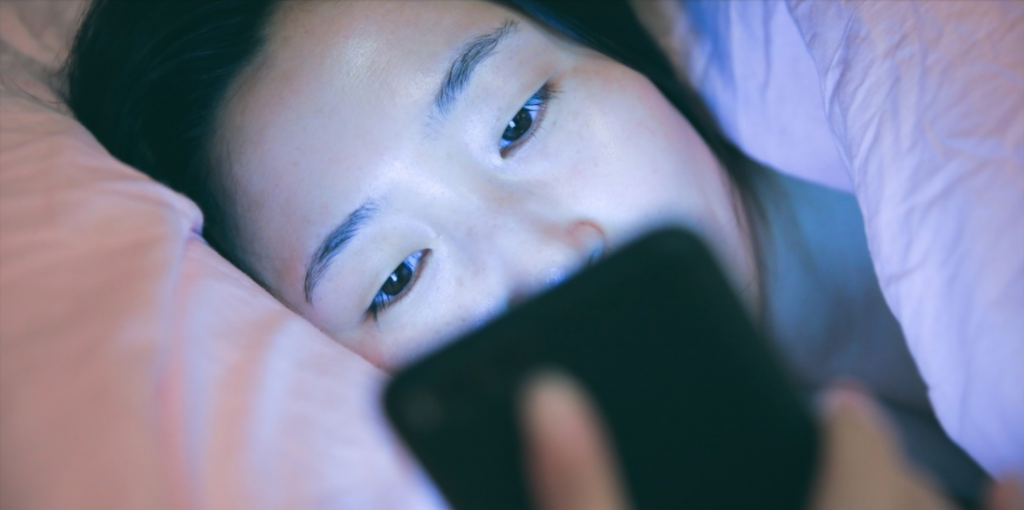While you may be looking forward to catching some extra sleep when we change our clocks on Nov. 1, the amount of rest that you get will depend in part on your current sleep habits.


In theory, “falling back” means an extra hour of sleep. However, time change causes all of our zeitgebers—external cues that help our bodies know when to fall asleep, wake up or even eat—to shift an hour. As humans who thrive on routine, this is an adjustment. However, the good news is that this adjustment is often short-lived.
As the end of daylight savings time draws near, it’s an ideal time to look at our sleep habits and think about how we can get better sleep.
How much sleep should you be getting?
The Canadian Society for Exercise Physiology recommends adults get seven to nine hours of sleep a night, with more sleep recommended for those under 18.
Sleep is a great coping mechanism, it is a protective factor against the stressors and worries that we are experiencing every day. When we get our recommended sleep we strengthen our immune system, regulate our stress and emotions, we have more energy and focus, and we improve our physical and mental health.
Sleep disruptions during COVID-19
COVID-19 has brought on many changes in the world around us that are impacting our routines and our zeitgebers. More people are working atypical work schedules and no longer commuting to and from work. Many of us are spending less time outdoors in the sun and are feeling confined and/or lonely due to physical distancing or quarantining. Common coping mechanisms include unhealthy eating, increased use of alcohol, caffeine, and drugs, and more time spent in front of screens, all of which negatively impact our sleep.
How to take control of your sleep
- Be consistent in your bedtime and wake time
For those of us without zeitgebers or very few of them during COVID-19, maintaining a consistent bedtime and wake time helps set your body’s internal clock (circadian rhythm). This will help your body get the amount of good quality sleep that it needs.
While you might not be able to take advantage of that extra hour of sleep on Nov. 1, it is a good reminder to keep a consistent bedtime and wake time to help your body adjust and to maintain healthy sleep habits.
- You sleep what you eat (or drink)
What you eat and drink throughout the day can impact how you sleep at night. There’s a lot of information about nutrition and its effects on sleep. Many of us are attempting to cope with our disrupted sleep, by consuming caffeine to keep us going during the day and by having a nightcap/alcohol in an attempt to help us sleep. Alcohol may help you fall asleep; however, it can prevent our much-needed REM sleep (dream sleep) and deep sleep.
A great place to start for better sleep is cutting back on caffeine in the afternoon/evening and try out some relaxing bedtime activities (see tip no. 5) instead of that nightcap. Limit your caffeine intake to no more than three eight-ounce cups of coffee per day, so you aren’t left counting sheep. Be sure to also limit your fluids in the evening, or you may be kept awake by trips to the bathroom throughout the night.
Looking for a midnight snack? It’s important not to go to bed hungry, as a rumbly tummy can keep you up at night. With that said, it’s just as important to choose the right foods to fill up on. Try to avoid eating rich, heavy foods right before bedtime.
- Expose yourself to bright light in the morning
Good morning, sunshine. Sunlight helps your biological clock reset itself every day. As we enter the fall and winter months, many of us have to adjust to waking up in the dark. Exposing yourself to more sunlight in the morning and throughout the day helps regulate your sleep-wake cycle, making you less tired throughout the day. Bundle up and try to get outside for some fresh air and a walk—physical activity can improve your sleep as well.
- Make sure your bedroom is sleep-friendly
Small changes to your bedroom environment can equal big changes for sleep. Consider your bedroom’s temperature, lighting and noise, and comfortable bedding, for better sleep.
For a better night’s sleep, keep your room dark and cool (around 18 degrees Celsius), and try to eliminate outside noises.
Your bedroom should be reserved for sleeping and sex—TVs, phones and computers should be left at the door. And for those of us working from home, it’s helpful to remember that working home shouldn’t be working from bed.
Finally, as sad as it might make Fido to sleep on the floor, sleeping with your pets can disturb your sleep, so find a designated area for them to sleep outside of the bedroom.
- Develop a relaxing night routine
Finding ways to relax can be important to improving your sleep. Rather than getting up-to-date on social media or COVID-related news, develop a bedtime ritual to let your body and mind know it’s time to turn off for the night. You might want to take a warm bath, read a book, take some time to meditate to clear your mind, do some light stretches, or listen to soft music to finish your day.
Kids especially benefit from a relaxing bedtime routine, but getting electronic devices out of the bedroom and reading a book before bed can improve anyone’s sleep, regardless of age.
- Exercise regularly during the day.
Get moving. Regular exercise improves many different aspects of health. As little as 10 minutes of regular exercise a day—think walking around your neighbourhood—can dramatically improve the quality of your sleep. As well, walking around your neighbourhood can be a great way to feel socially connected while remaining physically distant.
- Give yourself a break from screens
The pandemic has increased our screen use, as many of our in-person interactions are happening online. As the cold weather draws near, it is tempting to stay inside and spend even more time on our phones, tablets or watching television. However, the blue light emitted from screens can cause sleep disturbances, and the stimulation from the technology can delay bedtime. To find some balance, plan activities that give you a break from screens. Include people you care about in some of those activities as social connectedness has proven to be a buffer against the challenges of COVID-19.







































